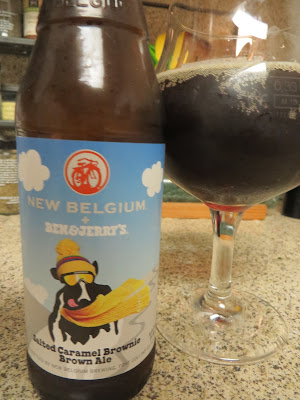This month's Session on
Holiday Beers got me thinking about the early holiday beers in the United States. While plenty of pre-prohibition holiday ales existed in the United States, the first modern holiday beer is widely credited to
Anchor Brewing's Christmas Ale, released in 1975. This beer was based heavily on Anchor's Liberty Ale, a hop-monster by 1970's standards that bears little resemblance to Anchor's Christmas Ale today. Arguably the next significant holiday beer release was
Sierra Nevada's Celebration, an IPA Sierra Nevada still brews to this day.
Given the first two major modern holiday beer releases in the United State were IPA's, why aren't most American holiday beers hop-forward IPAs? Why are dark, roasty, malt-dominated spiced ales largely dominate America's holiday beer landscape? And how did the iconic Anchor Christmas Ale transform from a ground breaking hop monster to the rich, roasty, spiced ale that in many ways has defined the modern version of this tradition?
Seeking answers to these questions, I recently spoke with Anchor Brewmaster Mark Carpenter, who's been brewing at Anchor at 1973 about the transformation of Anchor's Christmas Ale from a minor variation of the hoppy Libery Ale to it's current form today.
Recalling Anchor's initial Christmas beer in 1975, Mark explained, "Fritz (Maytag) though it would be fun to brew a Christmas beer. We're thinking, we're a tiny brewery, so we'll brew 400-500 cases, mostly for gifts. We were just trying something and see how it would work out."
 |
| Anchor Brewing's Mark Carpenter |
Then in 1983, things changed. "We finally had enough ale brewing capacity to brew Liberty Ale all year around," explained Carpenter. (Anchor's flagship Steam Beer is cold fermented.) So with Liberty Ale added to the line-up, Anchor decided to brew something different for the holidays. "We asked ourselves what our Christmas beer would be," explained Carpenter. "We had all traveled to England to research breweries, so a few of us wanted to brew a brown ale since we really liked the brown ales we had there. So we brewed a brown ale for the Christmas Ale, and modified it each year for three years."
Then came that fateful Christmas of 1987 when Anchor's Christmas Ale transformed into what we recognize it today. "That year, we decided to do a Wassail, a traditionally spiced beer for the holidays. Traditionally, the spices are added to the beer either at people's homes or in the pubs, but we added to the beer as it was brewed. I thought we'd do that for maybe a year or two."
Of course, that's not what happened. "Once you start putting spices in beer, it opens up a whole new world and we never went back. We could do all kinds of things. Everyone had all kinds of ideas and it really gave us a lot of opportunities to do a lot of spiced ales." As it does to this day, Anchor changes up the spice mix and recipe for each year's Christmas Ale.
I asked Mark if he was surprised that many craft breweries holiday beers resemble the dark roasted spiced ales that Anchor's Christmas Ale became rather than the IPA's of Anchor's Liberty Ale and Sierra Nevada's Celebration which initially started the trend. Laughing, he answered "It doesn't surprise me, and I don't mean to sound arrogant, but so many breweries just copied what we were doing."
Whether you believe Carpenter that Anchor's Christmas Ale of 1987 was widely copied, it's worth noting that two other influential Holiday Beers,
Deschutes's Jubelale and
Full Sail's Wassail, were first released within a couple years of the ground breaking 1987 Anchor version, and both are dark roasted spiced ales similar to Anchor's. So it seems fair to say that the transformation of Anchor's Christmas Beer through the 1980's still strongly reverberates today in craft breweries releases all over the United States.
Mark Carpenter wanted to include one final comment. "Fritz always insisted having "Merry Christmas and Happy New Year" on the labels. It shortens the selling time and our distributors wanted us to change it for that reason, but I think it's a great tradition. The new owners of Anchor insist on this as well."
 It's that time of year again. Time to spend time with the family rather than staring intently at the computer screen, furiously typing away. So I'll be checking out of this blog for a couple weeks before starting up again at the beginning of the year.
It's that time of year again. Time to spend time with the family rather than staring intently at the computer screen, furiously typing away. So I'll be checking out of this blog for a couple weeks before starting up again at the beginning of the year.












